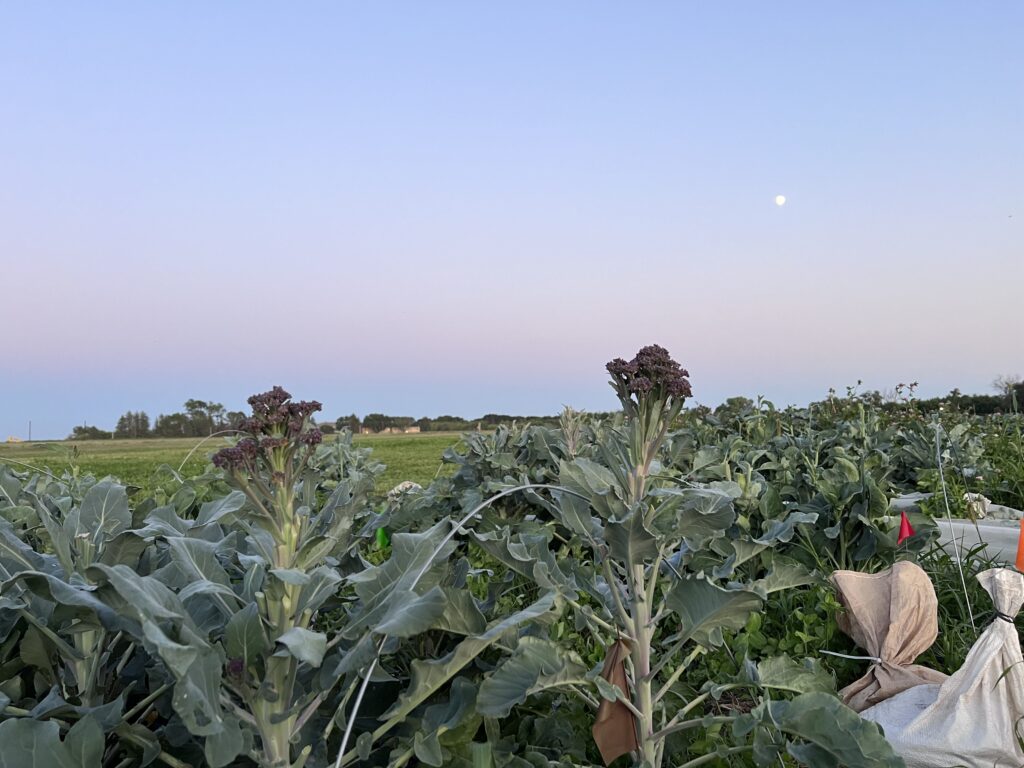
May 27, 2025Veg Connections: Heat-tolerant broccolini can integrate with clover living mulch
Many vegetable production systems rely on tillage to manage weed pressure that threatens cash crop yields. This heavy reliance on tillage is detrimental to the health of the soil and increases the likelihood of soil erosion from wind and rain.
To reduce in-row weed pressure, farmers often use a single-use plastic mulch that is thrown away after one season. The use of a perennial living mulch can help reduce the tillage requirements by competing with weeds and tolerating a low mowing height to reduce weeding requirements.
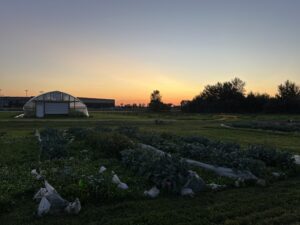
Living mulch is a cover crop grown concurrently with the cash crop, which can be a perennial or annual, grass or broadleaf. The goal of using a living mulch is tillage and erosion reduction, as well as weed suppression.
In the research project at South Dakota State University (SDSU), three clovers were selected for that added benefit of nitrogen fixation to potentially reduce fertilizer inputs. The clover cultivars used were ‘Domino’ white clover (WC) (Trifolium repens), Aberlastin white x kura clover (KC) (T. repens x ambiguum), and Dynamite red clover (RC) (Trifolium pratense).
Within each clover plot, there were four randomized soil management treatments: tilled (T), no-tilled (NT), tilled with fabric (TF), no-tilled with fabric (NTF). These four management options were chosen to determine how soil health and broccolini performance is affected by in-row management strategies. Prior research showed that broccoli struggle in clover living mulch, so broccolini was selected as the cash crop in the hopes it would tolerate the stresses related to living mulch systems.
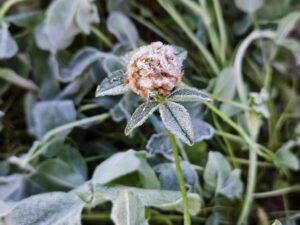
Broccolini is a lesser-known vegetable crop that has gained popularity in recent years. Broccolini is a cross between European broccoli, which is what most people in the U.S. think of as broccoli, and Chinese broccoli, also known as gai lan or Chinese kale. Broccolini goes by several names, including mini broccoli, sprouting broccoli, aspabroc, baby broccoli and tender stem broccoli.
Broccolini has a long, tender stem that does not need to be trimmed. It possesses a mild and sweet flavor in comparison to broccoli, which makes it ideal for cooking and reduces preparation work because of the grow habit and form. Unlike its broccoli parent, broccolini provides a continuous harvest that can last five to 14 weeks, decreasing in shoot size as the weeks go on.
‘Melody’ has large, rounded leaves with a small green floret and side shoots that closely resembles Chinese broccoli. ‘BC1611’ has long, wavy leaves with a green floret that resembles small European broccoli heads and long, slender side shoots. ‘Burgundy’ has long, wavy leaves with large, dark purple apical floret heads and long, slender side shoots.
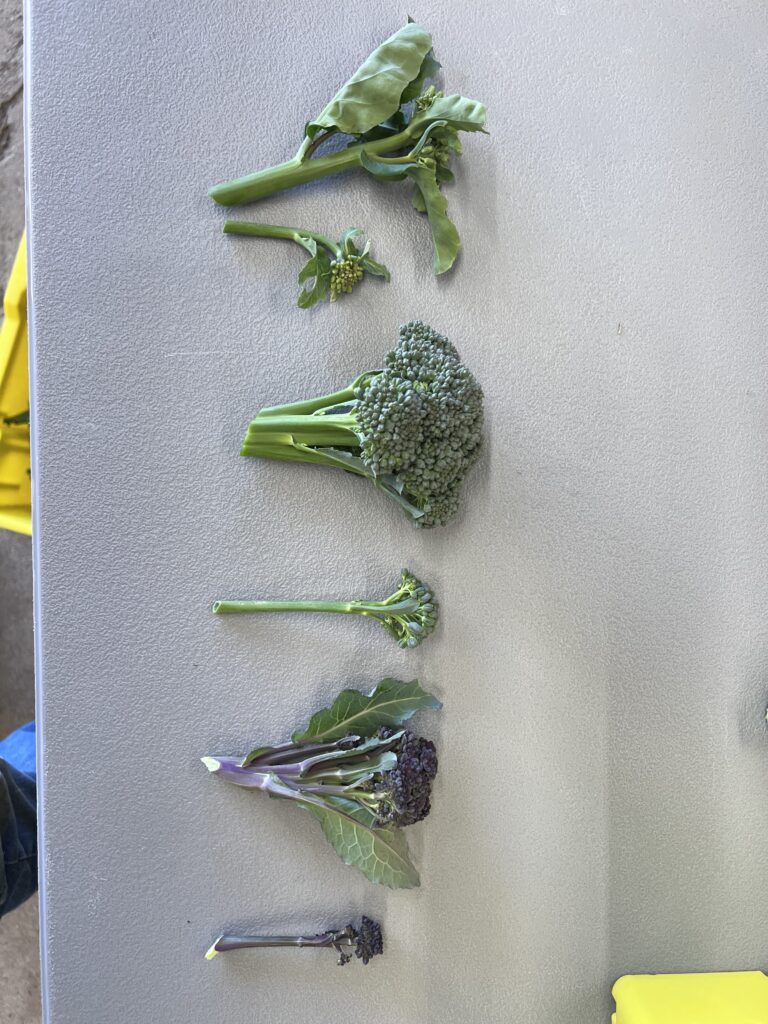
Broccolini was transplanted into the field on July 24 and 25. Each clover x soil management x broccolini cultivar sub-sub plot included five plants that were planted in 18-inch staggered double rows with 12-inch in-row spacings. Two lines of drip tap ran the entire length of the four subplots and were spaced approximately 16 inches apart on each bed for irrigation and fertigation. All broccolini rows were covered with ProtekNet pulled over 5-foot tall nine-gauge galvanized wire secured with sandbags to prevent damage from deer and insects.
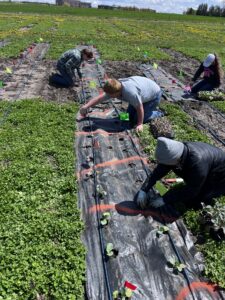
In the 2024 growing season, all three whole plot clover treatments accumulated more than 24,000 pounds of biomass per hectare, or 2.5 acres, which is nearly double the biomass needed to reduce weed pressure by 50%. Clover height showed no correlation to biomass as RC was taller than both KC and WC, but there was no difference in the weight of biomass per hectare.
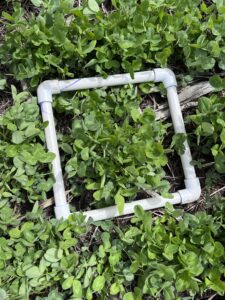
In-row clover and weed biomass data showed the NTF had the best reduction in weed biomass in BG, KC and WC. NT and T treatments in BG had taller weeds than NTF and NT. T treatment in WC had taller weeds than TF, NT and NTF, while NT had shorter weeds than T, TF, and NTF. In NT in all three clover treatments, there was more clover biomass than all other in-row treatments.

Melody had no difference in yield response to soil management and clover treatments except for in WC. WC had a decrease in average marketable shoots and weight per plant harvested in the NT soil management.
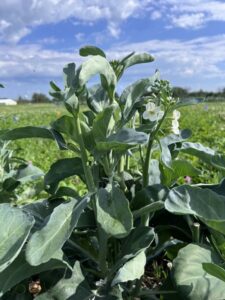
BC1611 had no difference in yield response to soil management and clover treatments in the average marketable shoots per plant harvested. RC had a decrease in average marketable weight per plant harvested in the NT soil management.
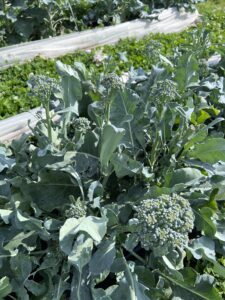
Burgundy had no difference in yield response to soil management and clover treatments in the average marketable shoots and weight per plant harvested.
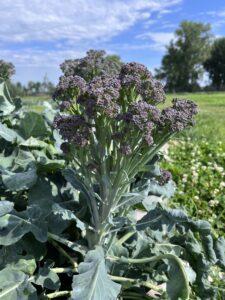
Living mulch is an investment of time and energy that requires help getting started but, once established, the long-term benefits can outweigh the initial cost. An increase in beneficial insects were observed in the clover treatments which may reduce pest pressure from cabbage looper and imported cabbage worm damage in Brassica species. The clover pathways will reduce the need for tillage but still require timely mowing to maintain its condition and reduce weeding.
To protect against early stress, growing larger transplants may help prevent yield loss for clover competition. Broccolini is a new variety of Brassica that can help farmers spread the risk that comes with single harvest crops like European broccoli. Broccolini takes more time to harvest and some skill to know where and when to cut shoots. The combination of a stress-tolerant cash crop like broccolini combined with the benefit of living mulch can greatly increase sustainability on farms. Read more about ongoing living mulch research at extension.sdstate.edu/tags/horticulture-research.
By Connor Ruen, Kristine Lang and Thandi Nyela
BIOS
Connor Ruen is a South Dakota State University (SDSU) graduate research assistant.
Kristine Lang is an SDSU assistant professor and Extension consumer horticulture specialist.
Thandi Nyela is an SDSU professor.
















